Makomo, egoma, yuzu, and beauty.
I live in the city now, but I grew up in a small community in the mountains. Because of this, when I experience the deep green of the forests, the clear water of mountain streams, and the soft air with my five senses, I think “This! This feeling!” as my heart fills with joy and my body relaxes. When I heard that, in such natural surroundings, new uses for makomo (Manchurian Wild Rice), egoma (Wild Sesame), and yuzu (Citron) were being developed, I had to go and investigate.
There, I discovered beautiful colors.
———Pure white makomo raised in water scrubbed clean by the mountains.
The morning is so beautiful it nearly makes us forget about the typhoon that came through a few days before. The location for this report is the town of Komono, which sits at the foot of the Suzuka mountain range and is blessed with water scrubbed clean by those mountains.
The coordinator for this report on makomo, Mr. Ryo Yamaoka, oversees the ”Become Beautiful With Makomo Project”. For this project, he plans events and develops recipes showcasing makomo, and works with local restaurants and inns, suggesting new ways to use makomo.
With Mr. Yamaoka and makomo farmer Toshihisa Tanaka, we head out to the makomo fields.
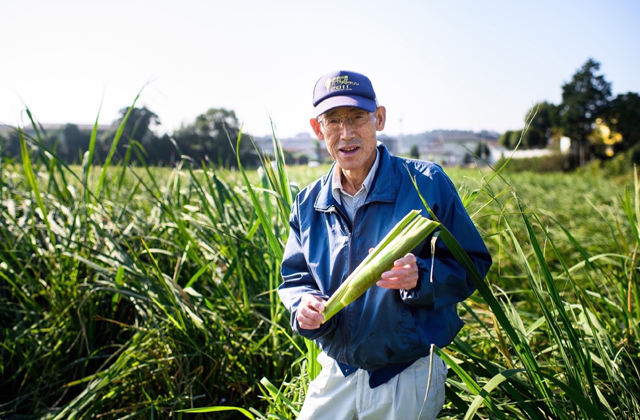
Although blown over by the recent typhoon, makomo plants can normally reach a height of more that 2 meters. As we part the green leaves and look toward the root of the plant, a gleaming white stalk shows its face.
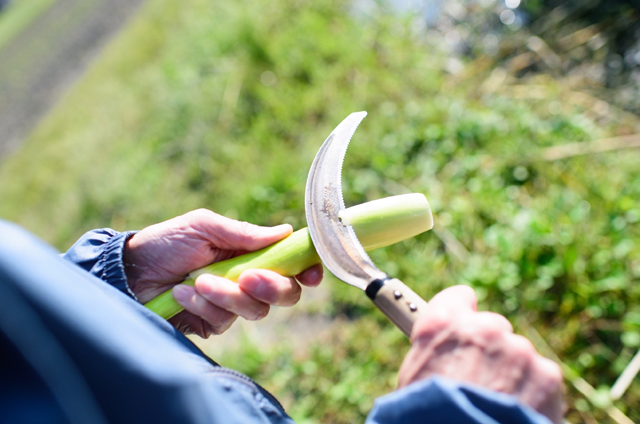
“This is makomodake. The white part is plump, it’s a tasty one!”
The pride in Mr. Tanaka’s voice makes our hearts dance.
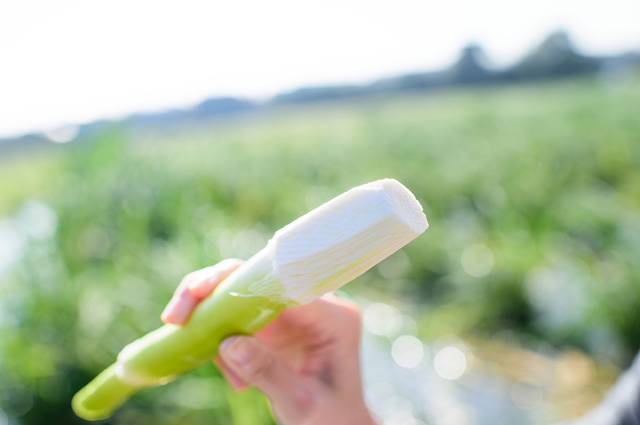
It can be eaten raw, so I take a bite. It has a sweet flavor, without any bitterness. Its texture is similar to that of baby corn.
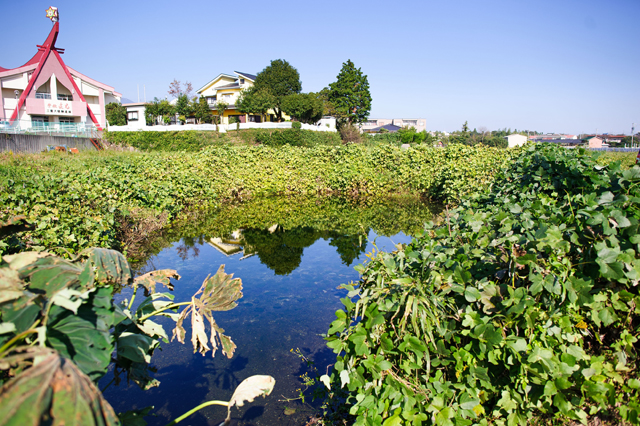
The water flowing around the fields has a high degree of clarity, and, as we raise our gazes to the rich green of the surrounding countryside, Mr. Tanaka says “This makomodake was raised in water scrubbed clean by the mountains, so of course it’s delicious!”
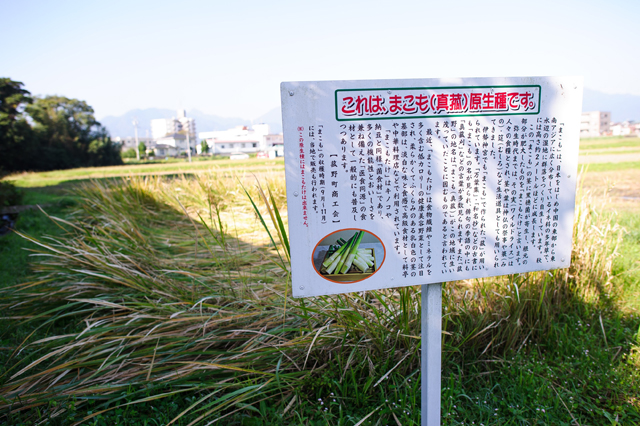
Nearby, there is some wild native makomo growing in a marsh. This is the source from which the town of Komono derives its name.
“If you visit the roadside market, they sell makomo products there.”
Upon hearing these words from Mr. Tanaka, we set out for the Komono roadside market.
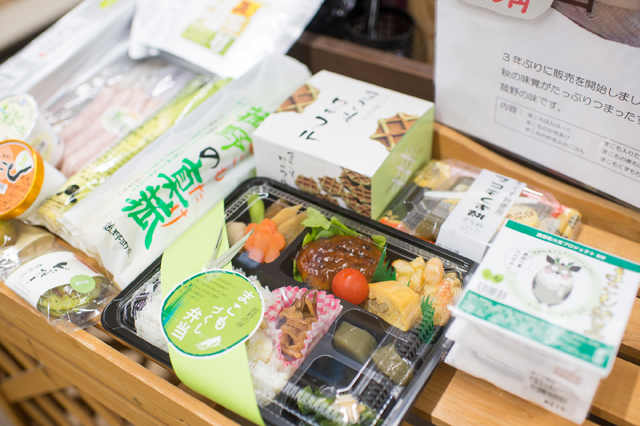
Among the many products for sale are, of course, sweets made from makomo flour, as well as fermented soybeans (natto) with makomo, and even limited time lunchboxes with makomo. There really are a wide variety of ways to use makomo.
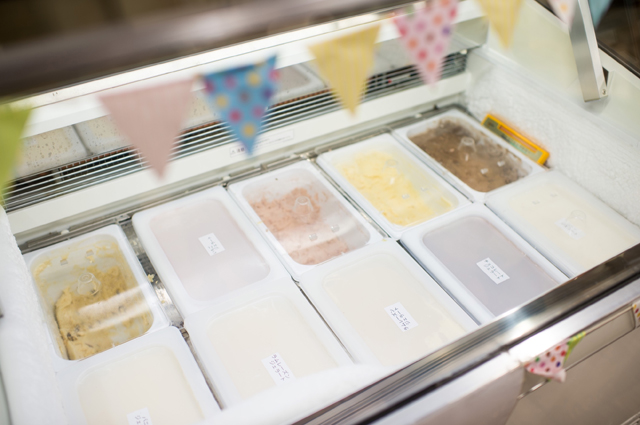
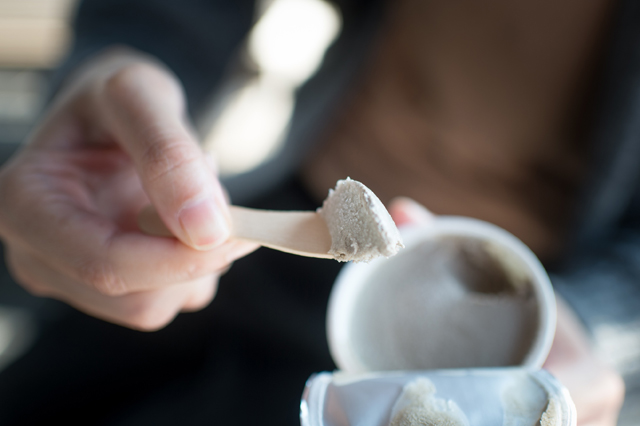
Just a taste of one such product, makomo ice cream. It has a flavor like smoky milk, an adult bitterness followed by a delicious refreshing sweetness.
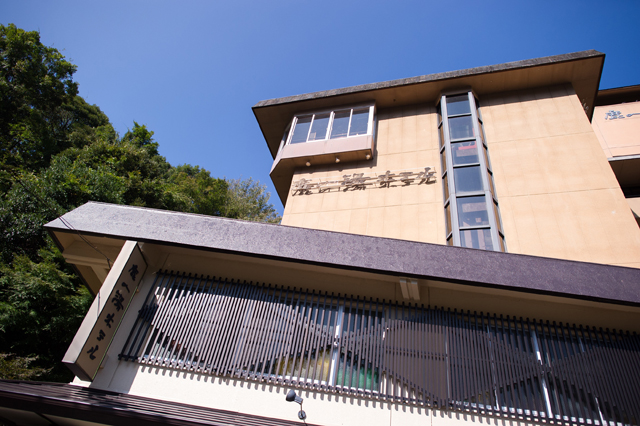
“If you want to know anything about makomo, this is the person to ask!” says Mr. Yamaoka as he introduces me to the proprietess of the Yunoyama Onsen Hotel, Ms. Sumiko Itou.
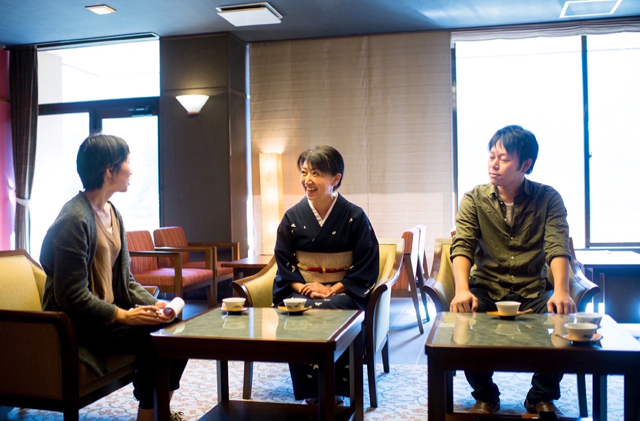
Ms. Itou studied botanical disease in her university days. It so happens that makomodake is the swelling of the bases of makomo stalks as the result of the action of a fungus. With knowledge like this, the food Ms. Itou promotes is makomo.
“ ‘The hemp of Ise, the makomo of Izumo’ it is said. The shimenawa (ceremonial rope) of the Izumo Grand Shrine is made from makomo. Also, makomodake and makomo flour can be enjoyed any way they are prepared. There are almost no other plants like it.” Ms. Itou tells us.
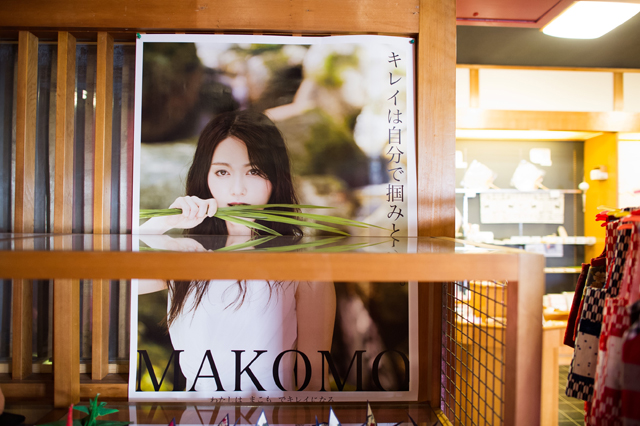
Looking at the walls inside the hotel, there is a beautiful girl putting makomo in her mouth. It is a poster for the “Become Beautiful With Makomo Project”. The health and beauty benefits of makomo, as well as nutritional facts, are published on the “Become Beautiful With Makomo Project” website.
The contemporary sensitivity about health and beauty. The town of Komono, working with makomo, is developing with the times to meet the needs of a new era.
Continuing on, to contrast with the white makomo, I head south to the mountain town of Odai to report on its black egoma (wild sesame). It takes about an hour and a half to drive there on the highway.
———Black like rich soil, the beauty of egoma
The Odaigahara mountains, where the town of Odai lies, is a lush green land recognized as a Unesco Eco-park. When I arrived to make my report, it was a beautiful clear autumn afternoon.
The cosmetic properties of egoma (wild sesame) have become a subject of discussion in recent years. Egoma came to be raised in Odai due to its environmental impact. Three years ago, the Women’s Division of the Taki Gun Oku Ise regional branch of JA developed a damage-free method of cultivating egoma. Although it got off to a fumbling start, the cultivation of egoma has improved bit by bit through the efforts of volunteers, leading to the surprisingly successful development of egoma oil products.
“This year’s egoma harvest will allow us to make enough oil to double last year’s sales of around 1000 bottles” says my report coordinator in Odai, Ms. Matsumi Nishiguchi. Ms. Nishiguchi participates in the local volunteer group as a spokesperson, as well as wholeheartedly participating in the egoma harvest and promoting the appeal of egoma products.
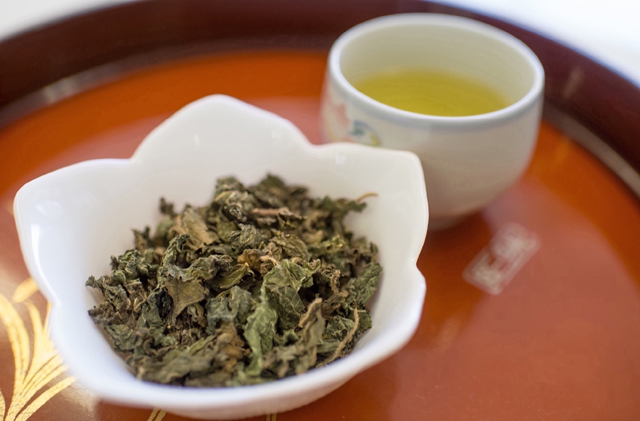
This area’s specialty, Odai Tea, when blended with dried egoma leaves, makes a tea whose refreshing aroma delights the nose and soothes the throat.
“It has a nice smell, like herbal tea, doesn’t it?” says JA Taki branch’s Ms. Miyako Yoshida.
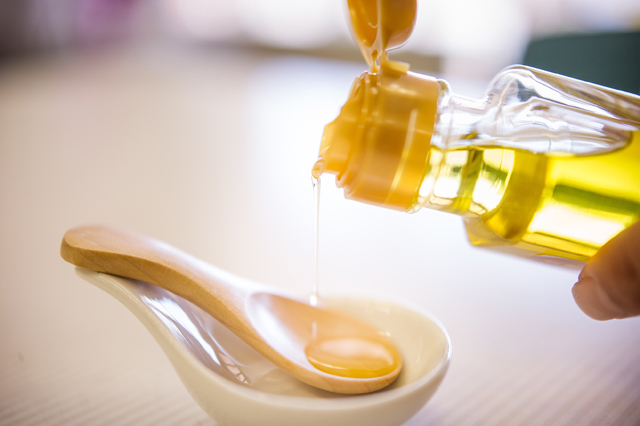
Next, amber colored egoma oil is brought out.
“Of all the egoma oils on the market, there are very few that are this richly colored.” Ms. Nishiguchi informs us.
No pesticides or artificial fertilizers are used on Odai’s egoma, and because it is all processed by hand, the resulting oil has few impurities and a deep color. It’s smoothness makes one marvel “This is oil!?”
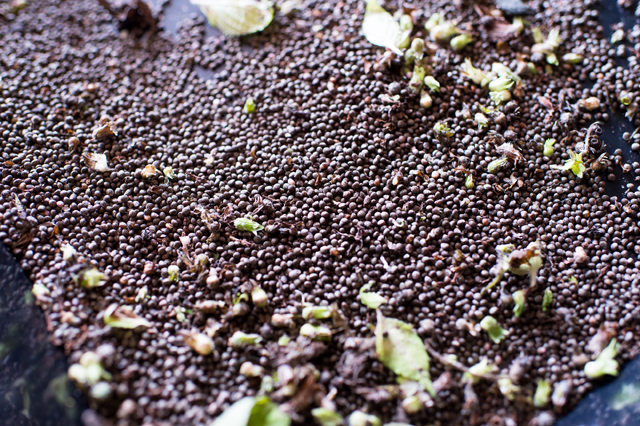
It’s hard to imagine such a lovely amber color coming from such black seeds.
Having never seen egoma fields or a harvest, I hurry out to the fields.
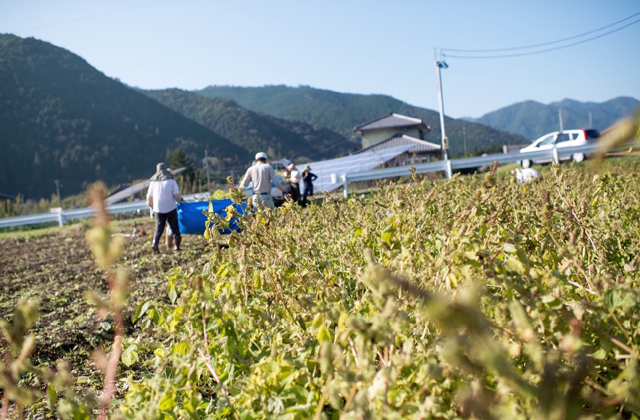
As I get out of the car, straight away I notice the fragrance. It is the same aroma as the tea from earlier. There are several people at work in the fields, cutting and harvesting. They are all local mothers and fathers.
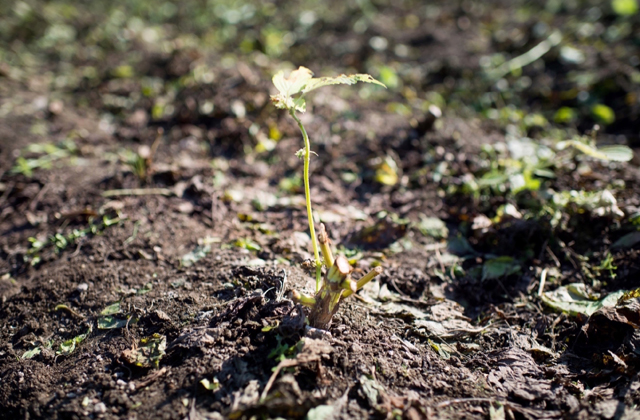
I raise my gaze to the beauty of the surrounding mountains, as warm sunlight spills down and fills the sky. The contrast of the interwoven light and soil creates scenery that makes one truly feel the life giving power of this great land.
While watching the harvest, I am approached by a filmmaker who lives in Nagoya, Ms. Tomomi Okane. When egoma farming was getting started, she created a farming experience program. Enchanted by the town of Odai, even now she often makes the journey here.
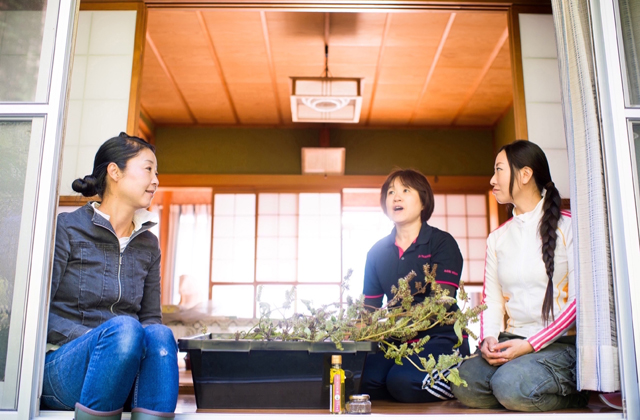
Borrowing the foyer of the home of one of the folks assisting with the harvest, Ms. Okane, Ms. Yoshida, Ms. Nishiguchi, and I sit down for a chat about egoma.
“At first, I wasn’t sure we could do it…”
“Pulling weeds and stuff in the summer is a ton of work, but, happily, lots of folks get together and help out.”
“Doing everything by hand is hard, but I’m so happy that Odai egoma oil has become so popular.”
Listening to these three talk, the air seems to heat up slightly, enveloping us in warmth.
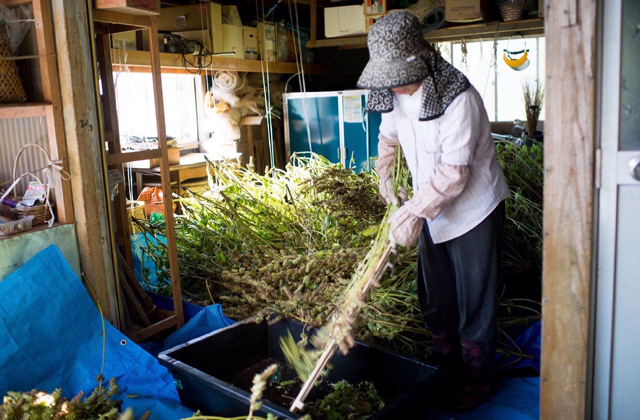
Now, everyone is beating the harvested and dried branches. When hit with a board, loads of 1 millimeter seeds drop off the branches to be collected. This is called hiroiatsumeru (gathering).
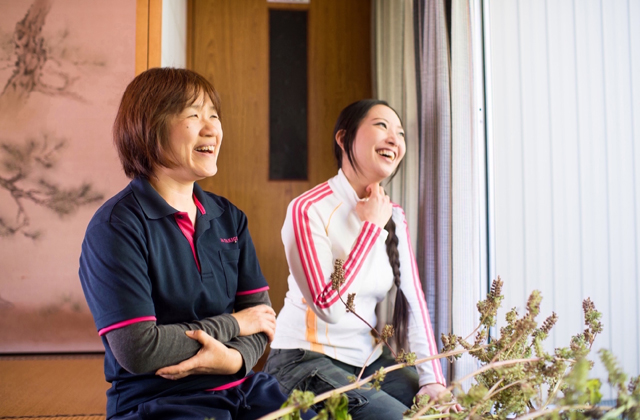
“It’s wonderful how local folks come together at harvest time, chatting and getting to know one another better.” says Ms. Nishiguchi.
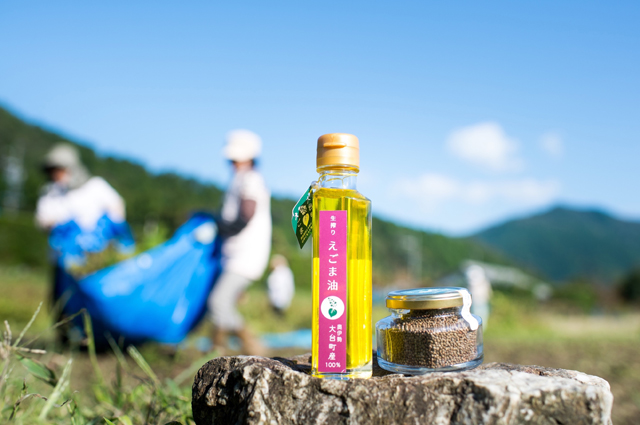
From these seeds as black as the earth there comes a light making a brighter tomorrow for this area.
———Yuzu, as yellow as the sun
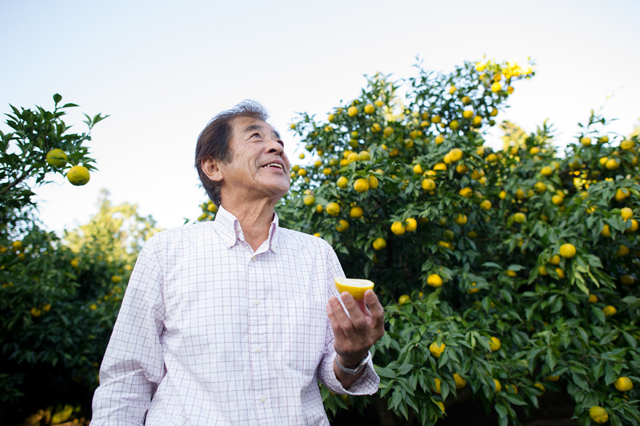
The town of Odai is located in the mountains of the Kii Peninsula, which gets a lot of rain. This makes it perfect for cultivating yuzu (citron), which dislikes dry summers. Thus there is a lot of yuzu cultivation here. At the home of yuzu grower Mr. Satoshi Ogura, I was able to see yuzu trees sagging under the weight of their fruit.
Quickly we went around to the groves in the back.
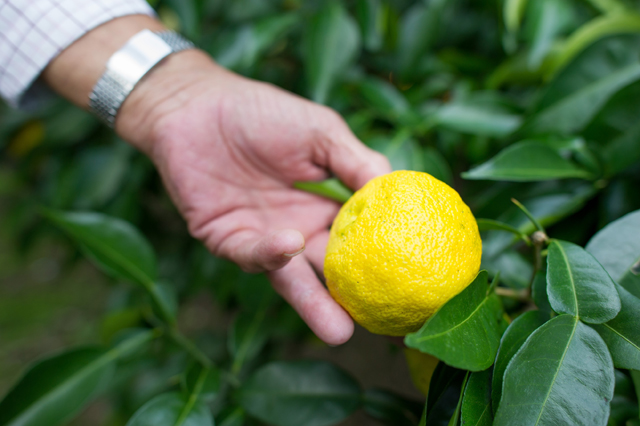
Such large fruit. Orbs the color of the sun with a scent of slightly bitter citrus. Unexpectedly, I’m offered a bite. A rush of sourness, but with a rich savory flavor...there is a strong sense of the power of the sun and the loving care these fruits receive.
I speak with Mr. Ogura.
He says he began cultivating yuzu about 20 years ago. Until then, there hadn’t been anyone growing yuzu in Odai. Faced with continuing depopulation, in an effort to start some new local industry, yuzu cultivation began. Yuzu has a low environmental impact and can be processed into many goods.
Now, he knows many other yuzu growers, and all sorts of folks, from people looking to become yuzu growers to people thinking up new ways to use yuzu, come to consult with Mr. Ogura.
I’d like to present some of these yuzu products.
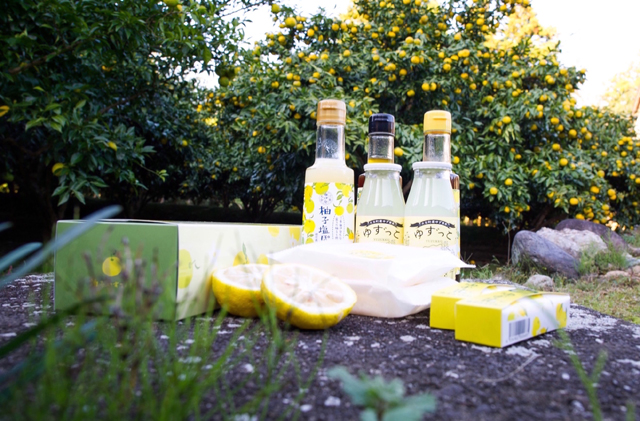
Using local yuzu, the town food processing factory produces juice and sweets.
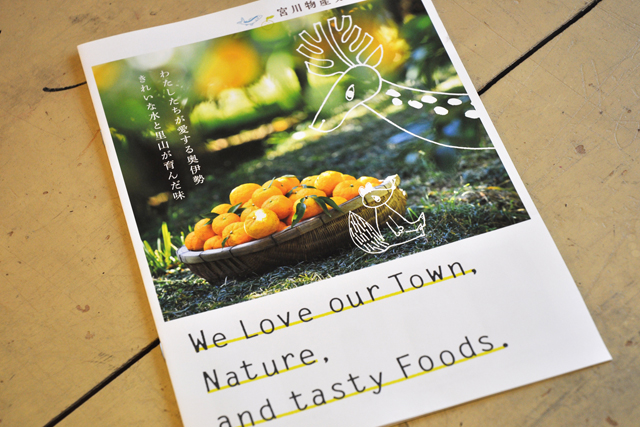
The design of product packaging and catalogs takes care to feature the rich natural environment that gives local yuzu its special appeal.
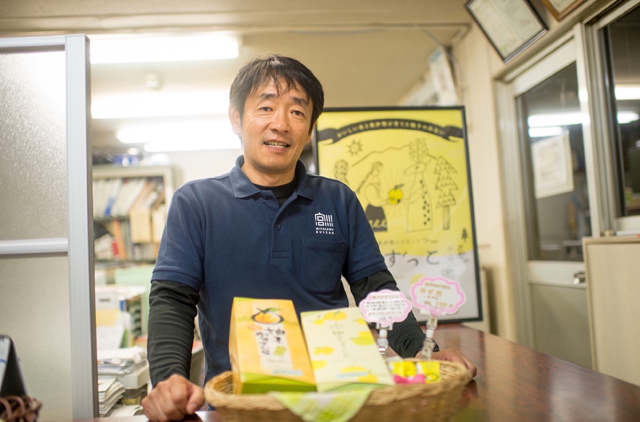
Factory manager Mr. Kazuya Tamura shows me around, and his words make a deep impression on me.
“As we get older, we begin to want to return to the place where we were born and raised.”
Mr. Tamura lives here now after making a U-turn from a more urban area in the prefecture. The natural surroundings of one’s early days are burned into the back of one’s mind, and continue to linger even after one moves away from that place. The farm products raised in these natural surroundings become part of one’s body.
Continuing on, I pay a visit to a local civil engineering company.
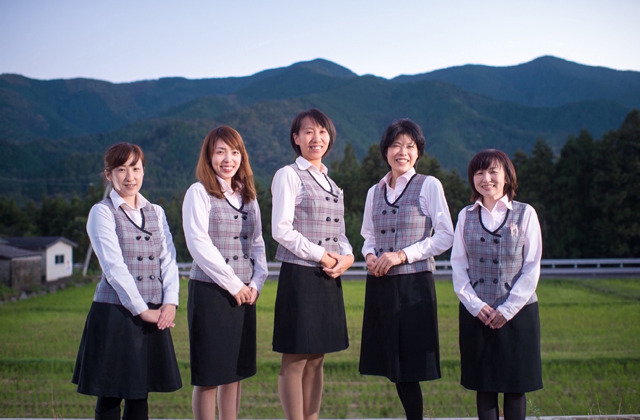
I am greeted by the ladies who make up “The Ashitaba Division” a unit within the company which develops, manufactures, and markets cosmetics made using local yuzu.
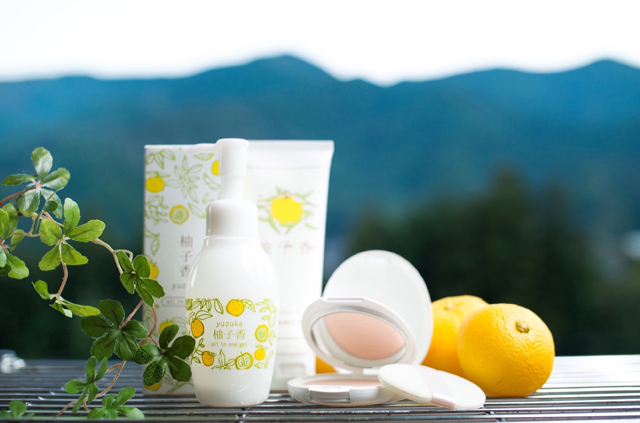
These cosmetics are gentle on the skin, fulfilling the beauty needs of many people.
In developing these products, the members of the Ashitaba Division used their own concerns as a jumping off point. Taking into account sensitive skin, lack of time, affordability, and other issues, the ladies set their sights on using yuzu compounds to make cosmetics that address problems faced by many women.
As I wrap up my report, the sun has sunk behind Odaigahara. Tomorrow too the warm light will shine down.
In the midst of nature, life-giving foods are raised in this place, full of shining colors. These colors are the light of life. I saw this light of food and life glittering in the eyes of the people whom I met in the course of my report today.
October 26, 2017
Produced for Web Magazine Otonamie
By: Hiromi Kasai (Otonamie Reporter)
Produced with the cooperation of:
Becoming Beautiful With Makomo Project
Mie Ken Mie Gun Komono Cho Komono 8522
(In the Special Non-Profit Corporation Mie Prefecture Environmental Preservation Center)
TEL 059-392-3350
FAX 059-392-3351
HP http://eccom.jp/makomo/
Facebook https://www.facebook.com/まこもでキレイになろうプロジェクト-939081729484070/
Makomo No Komono Kai
Mie Ken Mie Gun Komono Cho Komono 1692
TEL/FAX 059-393-1346
Yunoyama Onsen Shika no Yu Hotel
Mie Ken Mie Gun Komono Cho Yunoyama Onsen
TEL 059-392-3141
FAX 059-392-2207
HP http://www.sikanoyu.co.jp
Facebook https://www.facebook.com/鹿の湯ホテル-235849539799175/
Michi No Eki Komono
Mie Ken Mie Gun Komono Cho Komono 2256
TEL 059-394-0116
HP http://www.kanko-komono.com/michinoeki/
JA Taki Gun Silver Center Oku Ise
(Oku Ise Egoma Club Office)
Mie Ken Taki Gun Odai Cho Kamikusu 221-1
TEL 0598-83-2614
FAX 0598-83-2296
Torikonosekai It is a miracle!
(Become a toriko farming experience and picnic in Odai, Mie Prefecture)
HP https://toriconosekai.wordpress.com
Yuzu Grower Mr. Satoshi Ogura
HP http://www.miyafoods.com/interview.html
Miyagawa Foods Inc.
Mie Ken Taki Gun Odai Cho Hondagoya 388-1
TEL 0598-76-0200
HP http://www.miyafoods.com
Facebook https://www.facebook.com/miyafoodscom/
Maruhachi Civil Engineering Inc. Ashitaba Division
Mie Ken Taki Gun Odai Cho Ema 668-1
TEL 0120-003-655
FAX 0598-76-0888
HP http://www.ashitaba-cosme.com
Facebook https://www.facebook.com/ashitaba.2221/